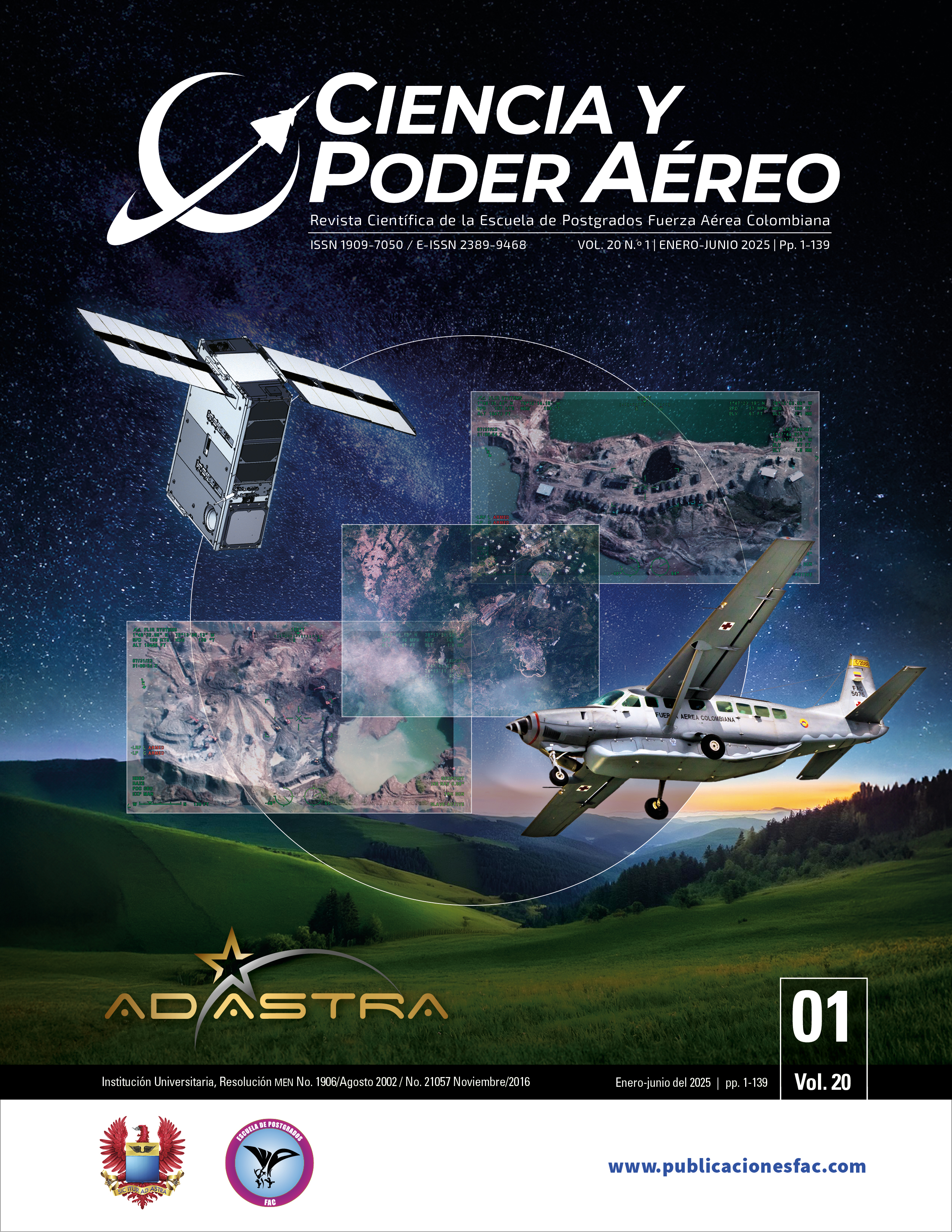Extension of servicelife for GBU-49 bombguidance systems ofthe ColombianAir Force
DOI:
https://doi.org/10.18667/cienciaypoderaereo.835Keywords:
Extension, shelf-life, safety, AECTP-600, SECADAbstract
In the warehouses of the Colombian Air Force, aeronautical spare parts and aerial weaponry acquired during critical moments of the armed conflict are stored, and they are approaching the end of their service life. Given the manufacturers’ policies, which include safety factors in the design and determination of service life, it is a priority to study the possible extension of the service time of this material, provided that the safety and quality requirements established by the manufacturer are maintained.
This article analyzes various methodologies to evaluate and extend the service life of military systems and materials, focusing on documents such as AECTP-600, MIL-HDBK-1763, JOTP-001, and other relevant studies. nato’s AECTP-600 presents a ten-step method that includes design analysis, risk management, testing, and performance optimization. The U.S. Department of Defense’s MIL-HDBK-1763 focuses on the compatibility and maintenance of payloads on aircraft, while JOTP-001 provides guidelines for assessing the safety and effectiveness of non-nuclear munitions. Additionally, studies such as Mark Ashcroft’s work on ammunition life cycle management and the analysis by Štefan Pivko and Štefan Timár on the impact of storage conditions are reviewed.
The Colombian Air Force applied these principles to extend the service life of the GBU-49 guidance system, documenting the process in the Aeronautical Product Certification Plan, validated by the Defense Aeronautical Certification Office. Through this plan, exhaustive tests and statistical analyses were conducted to project the degradation of critical components, resulting in a five-year service life extension. This approach ensured the safety and functionality of the system, demonstrating the importance of rigorous evaluation and risk management in the extension of military material service life.
Downloads
References
Ashcroft, M. (2022). A traditional approach to munition life management. Energetics science and technology: An integrated approach (A. S. Cumming, ed.; pp. 9-22). IOP Publishing. DOI: https://doi.org/10.1088/978-0-7503-3943-8ch9
Department of Defense. (1998). mil-hdbk-1763, Department of Defense Handbook. Aircraft/stores compatibility: Systems engineering data requirements and test procedures. EverySpec Standards [en línea]. http://everyspec.com/MIL-HDBK/MIL-HDBK-1500-1799/MIL_HDBK_1763_1775/
Pivko, Š. y Timár, Š. (2014). Effect of Storage Conditions on the Viability of Ammunition, University Review, 8(3-4), 29-33. https://ur.tnuni.sk/fileadmin/dokumenty/UR_V8_ISS3-4_29to33.pdf
Downloads
Published
Issue
Section
License
Copyright (c) 2024 Escuela de Postgrados de la Fuerza Aérea Colombiana

This work is licensed under a Creative Commons Attribution 4.0 International License.
Assignment of Copyrights
Authors assign Ciencia y Poder Aéreo journal the exclusive rights (reproduction, distribution, public communication, and transformation) to exploit and commercialize their work, in whole or in part, in all the formats and modalities of present or future exploitation, in all languages, throughout the life of the work and throughout the world.
All contents published in Ciencia y Poder Aéreo journal are licensed under a Creative Commons Attribution 4.0 International License, whose complete information is available at http://creativecommons.org/licenses/by/4.0/
Under the terms of this license, users are free to download, print, extract, archive, distribute and publicly communicate the content of articles, provided that proper credit is granted to authors and Ciencia y Poder Aéreo, scientific journal of the Graduate School of the Colombian Air Force. Except when otherwise indicated, this site and its contents are licensed under a Creative Commons Attribution 4.0 International License.
For other uses not considered under this license it is required to contact the Director or the Editor of the journal at the e-mail address cienciaypoderaereo1@gmail.com.
The Graduate School of the Colombian Air Force and this publication are not responsible for the concepts expressed in the articles, including the metadata or the affiliation stated by authors. This is the full responsibility of the authors.






















